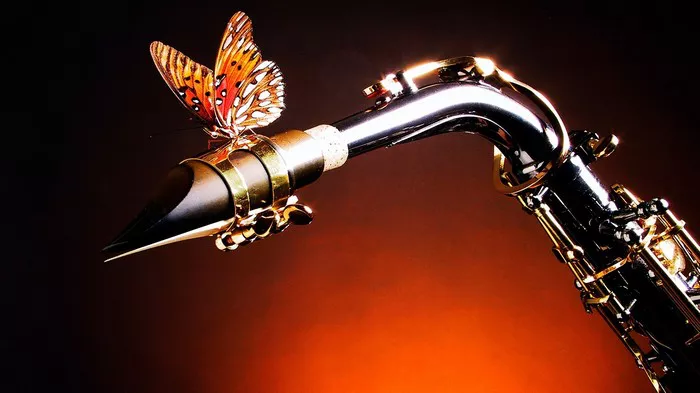The tenor saxophone, a prominent member of the saxophone family, is renowned for its warm and expressive tone. For aspiring musicians and aficionados alike, understanding the key arrangement of this instrument is fundamental. In this article, we will explore the intricacies of the tenor saxophone’s key system, shedding light on its various components and their functions.
Introduction to the Tenor Saxophone
Before delving into the specifics of the tenor saxophone’s key arrangement, let’s start with a brief introduction to this captivating instrument. The tenor saxophone is a medium-sized saxophone, pitched in the key of B♭. It falls in the range between the higher-pitched alto saxophone and the lower-pitched baritone saxophone, making it a versatile choice for a wide range of musical genres, from jazz and classical to rock and pop.
The Basic Components of a Tenor Saxophone
A tenor saxophone consists of various components, including the mouthpiece, neck, body, bell, and, of course, the keys. The keys are a crucial part of the instrument, as they allow the player to produce different notes and create melodies. Understanding the key arrangement is essential for playing the tenor saxophone proficiently.
The Number of Keys on a Tenor Saxophone
A tenor saxophone typically has around 23 to 25 keys. The exact number may vary depending on the brand and model of the instrument. These keys are strategically placed on the instrument to control the opening and closing of tone holes, which, in turn, alters the pitch and produces different notes.
The Front Side Keys
The front side of the tenor saxophone, also known as the top, features a set of keys that the player uses for various purposes:
1. Palm Keys: Located on the top part of the saxophone’s body, these keys are typically operated by the player’s left hand’s palm. They control the higher register notes, and their positioning allows the player to reach these notes comfortably.
2. Bis Key: The bis key is used to facilitate the transition from the low B to the high B by opening an additional tone hole. It is operated by the right thumb and allows for smoother note changes.
3. High F# Key: The high F# key, as the name suggests, helps the player produce a high F# note. It’s typically located on the body of the tenor saxophone and is operated by the left-hand thumb.
The Side Keys
The side keys of a tenor saxophone are located on the instrument’s side and are operated by the player’s fingers. These keys are integral to playing the instrument efficiently:
1. Side B♭ Key: The side B♭ key is often used to produce B♭ and other related notes, such as A# or G#. It’s positioned on the side of the instrument’s body, near the player’s left-hand fingers.
2. Side C Key: The side C key is used to play C and other adjacent notes. It’s positioned near the side B♭ key and is operated by the left-hand fingers.
3. Low C# Key: The low C# key, operated by the left-hand little finger, plays an essential role in producing the low C# note. Its positioning is usually on the side of the saxophone.
The Keys on the Back Side
The back side of the tenor saxophone, also known as the bottom, features keys that help control the lower register notes:
1. Low Bb Key: The low B♭ key, typically operated by the player’s left-hand thumb, is fundamental for producing the low B♭ note.
2. Low B Key: The low B key, also operated by the left-hand thumb, is used to produce the low B note, one of the lowest pitches on the tenor saxophone.
The Right-Hand Keys
The right-hand keys on a tenor saxophone are crucial for producing notes in the lower register and controlling various aspects of the instrument:
1. Low D# Key: The low D# key is operated by the right-hand little finger and is used to produce the low D# note.
2. Low D Key: The low D key, operated by the right-hand little finger, is used for producing the low D note.
See Also: Demystifying the Saxophone: Why is it in a Different Key?
Exploring Additional Keys
Apart from the core keys mentioned above, tenor saxophones may have additional keys, such as the G# trill key and the alternate F# key, which help facilitate specific techniques and note transitions.
The Importance of Key Maintenance
A well-maintained key system is vital for the tenor saxophone’s functionality and sound quality. Regular maintenance, including cleaning and lubricating the keys, ensures that they move smoothly and respond effectively to the player’s commands.
Learning to Play the Tenor Saxophone Efficiently
To master the tenor saxophone’s key system and play efficiently, consistent practice, proper fingering techniques, and guidance from a qualified instructor are essential. Learning scales, etudes, and various musical styles can help you become a proficient tenor saxophonist.
Conclusion
The key arrangement of a tenor saxophone is a complex yet fascinating aspect of this versatile instrument. Understanding the function and placement of each key is pivotal for any aspiring tenor saxophonist. With regular practice, proper fingering techniques, and dedication to maintenance, you can unlock the full potential of this beautiful instrument and express your musical creativity to the fullest.


